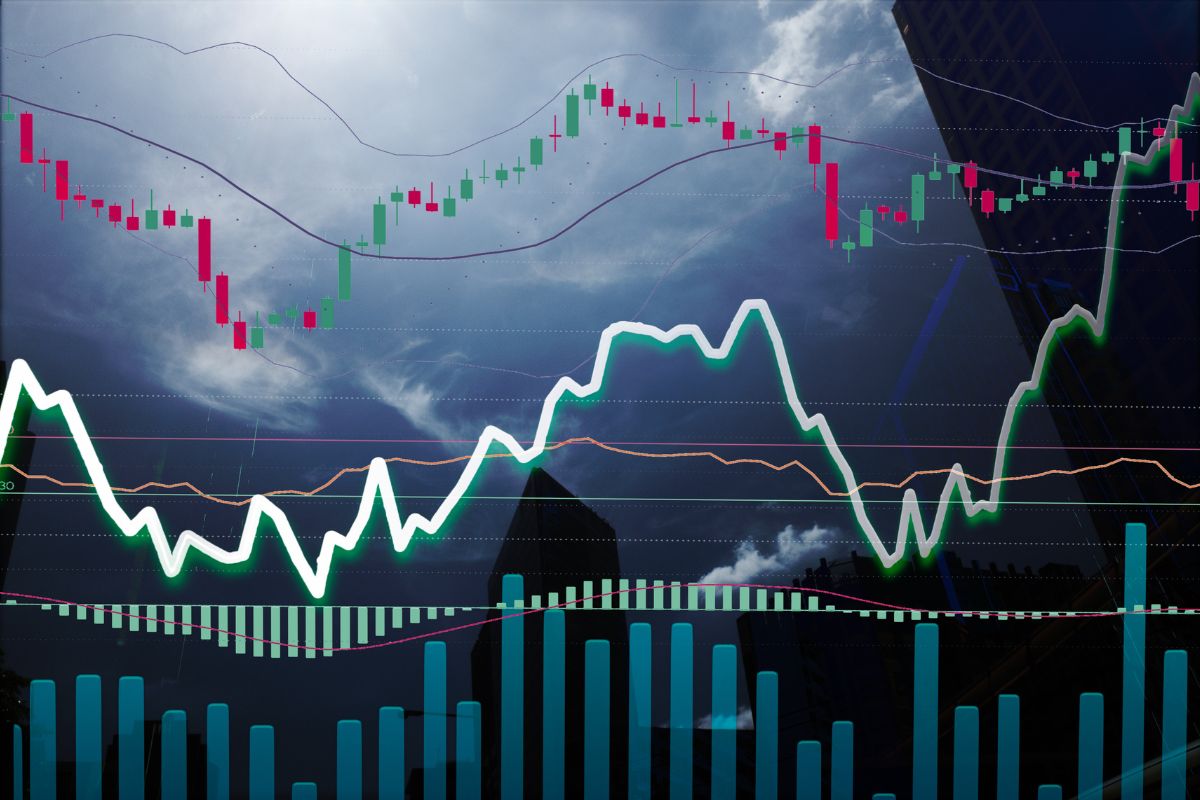Volume is one of the most important factors in trading, as it reflects the level of interest and activity in a market. A volume indicator is a technical tool that helps traders analyze the volume data and identify the strengths, weaknesses, and direction of the price movements. This article guides utilizing a volume indicator to improve trading strategies and decision-making. It also highlights four top-performing volume indicators that can be utilized across various markets and timeframes. Whether one is a novice or a seasoned trader, this article offers valuable insights and information. So, let’s get started!
What is a Volume Indicator?
A volume indicator is a graphical representation of the amount of trading activity in a market over a certain period of time. It shows how many shares or contracts have been traded, and how much money has been exchanged. Volume indicators can be used to measure the liquidity and the market sentiment of security, as well as to confirm the validity of price trends and signals.
Volume indicators can be divided into two main categories: volume-based indicators and price-volume indicators.
Volume-based indicators use only the volume data to generate signals, while price-volume indicators combine the volume data with the price data to generate more complex signals. Some examples of volume-based indicators are volume bars, volume profiles, and volume oscillators. Some examples of price-volume indicators are on-balance volume (OBV), volume price trend (VPT), and Klinger oscillator.
Why is Volume Important in Trading?
Volume is important in trading because it reflects the supply and demand forces that drive the price movements. By analyzing the volume patterns, traders can gain insights into the following aspects of the market:
Trend Confirmation
Volume can confirm the direction and strength of a price trend. Generally, a rising market should see rising volume, and a falling market should see falling volume. This indicates that there is a strong conviction and momentum behind the price movement. Conversely, if the volume is decreasing while the price is moving in a certain direction, this indicates that there is a lack of interest and enthusiasm in the market, and the trend may be losing steam or reversing soon.
Exhaustion Moves
Volume can also indicate the end of a price trend when there is a sudden spike or drop in volume accompanied by a sharp price movement. This is called an exhaustion move, and it signals that the market participants who have been driving the trend are either taking profits or exiting their positions, leaving no more buyers or sellers to sustain the trend. An exhaustion move is often followed by a reversal or a consolidation in the opposite direction of the previous trend.
Breakouts and Breakdowns
Volume can also help traders identify valid breakouts and breakdowns from support and resistance levels, chart patterns, or trading ranges. A breakout or a breakdown is a price movement that surpasses a significant level of resistance or support, indicating a change in the market sentiment and a potential new trend.
It should be noted that not all instances of breakouts and breakdowns in trading are legitimate. Some may be deceptive signals that result in traders making losing trades. To prevent falling into this trap, traders can utilize volume as a means to verify the authenticity of a breakout or breakdown.
A valid breakout or a breakdown should be accompanied by a surge in volume, showing that there is a strong demand or supply behind the price movement. A false breakout or a breakdown, on the other hand, should have low or declining volume, showing that there is no conviction or momentum behind the price movement.
How to Use a Volume Indicator
A volume indicator can be used to enhance your trading strategy in various ways, depending on your trading style, objectives, and preferences. Here are some general guidelines on how to use a volume indicator to improve your trading performance:
- Choose a volume indicator that suits your trading needs and goals. There are many volume indicators available, and each one has its advantages and disadvantages. You should choose a volume indicator that matches your trading style, market, timeframe, and risk tolerance. For example, the trading volume of MSFT (Microsoft Corp.) on November 29, 2023, was 9,344,965 shares, while the average trading volume of the Nasdaq index on the same day was 3,557,000,000 shares. This means that MSFT accounted for about 0.26% of the Nasdaq trading volume, which is slightly higher than its average share of 0.23% in the past year. This suggests that there was a slightly above-average interest and activity in MSFT on that day, which may indicate a positive or negative outlook for Microsoft stock price today, depending on the price movement and other factors.
- Alternatively, you can also use the volume price trend (VPT) indicator, which is a price-volume indicator that measures the cumulative change in the price of a security relative to its volume. The VPT indicator can help you identify the trend direction and strength of MSFT, as well as potential divergences or signals of a trend reversal. You can apply the VPT indicator to the MSFT chart using any online charting tool.
- Apply the volume indicator to your chart and adjust the settings accordingly. Once you have chosen a volume indicator, you should apply it to your chart and customize the settings to fit your trading needs and preferences. For example, you may want to change the color, size, or style of the volume bars or the period, smoothing, or scaling of the volume oscillator. To optimize the performance of the indicator, it is recommended to test various settings and observe their impact on both the signals and overall performance.
- It is also beneficial to utilize the volume indicator in conjunction with other technical tools and analysis methods. This ensures that the volume indicator is not relied on alone, but rather used in combination with other indicators such as price action, trend lines, chart patterns, moving averages, and oscillators. By doing so, the accuracy and reliability of signals can be enhanced, allowing for the filtering out of false or weak signals. You should also use the volume indicator in alignment with the overall market context and sentiment, such as the economic news, events, and cycles.
- Follow the rules and signals of the volume indicator and execute your trades accordingly. Once you have established a trading system that incorporates the volume indicator, you should follow the rules and signals of the indicator and execute your trades accordingly. You should also have a clear entry, exit, and risk management plan for each trade, and stick to it. You should not let your emotions or biases interfere with your trading decisions, and you should always review your trades and learn from your mistakes and successes.
Bottom Line
Volume indicators are powerful technical tools that can help you enhance your trading strategy and make better decisions. You should choose a volume indicator that suits your trading needs and goals, apply it to your chart and adjust the settings accordingly, use it in conjunction with other technical tools and analysis, follow the rules and signals of the indicator, and execute your trades accordingly. By doing so, you can improve your trading performance and achieve your trading objectives.












